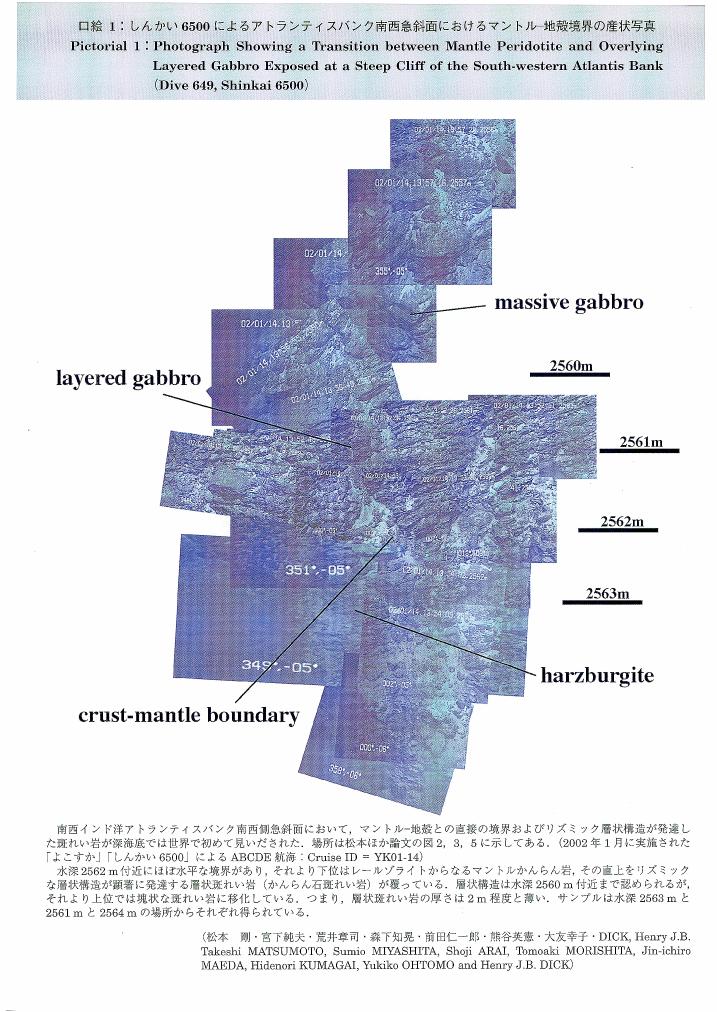- 著者
- 松本 剛 宮下 純夫 荒井 章司 森下 知晃 前田 仁一郎 熊谷 英憲 大友 幸子 Henry J.B. DICK
- 出版者
- Tokyo Geographical Society
- 雑誌
- 地学雑誌 (ISSN:0022135X)
- 巻号頁・発行日
- vol.112, no.5, pp.Plate3, 2003-10-25 (Released:2009-11-12)
- 著者
- 松本 剛 宮下 純夫 荒井 章司 森下 知晃 前田 仁一郎 熊谷 英憲 大友 幸子 DICK Henry J. B.
- 出版者
- 東京地学協会
- 雑誌
- 地學雜誌 (ISSN:0022135X)
- 巻号頁・発行日
- vol.112, no.5, pp.705-719, 2003-10-25
- 参考文献数
- 20
- 被引用文献数
- 6 4
To characterise the crust-mantle boundary (petrological Moho) and to find evidence of ophiolite model, we investigated the lithology and the development process of the oceanic crust. We carried out geological and geophysical studies of Atlantis Bank core complex located at the eastern margin of the Atlantis-II active transform in the Southwest Indian Ridge (SWIR) using deep sea submersibles and remotely operated vehicles. Unaltered lower crust and uppermost mantle rocks were observed at the southwestern slope of Atlantis Bank. The lower crust of this part of Atlantis Bank is similar to the ophiolite exposed ashore. On the other hand, a large number of dike intrusions into gabbroic massifs were observed at the eastern wall and at the southern slope of the bank. This corresponds to the dike-gabbro transition in the ophiolite model. Dike intrusions were also observed in the mantle peridotite domains. This may, however, suggest melt intrusions into the bank near the spreading axis posterior to the mantle peridotite that was dragged out along the detachment faults, or may suggest possible horizontal melt intrusion from the segment centre to the segment edge characterised by a thin plutonic layer. The northern ridge-transform intersection RTI of the Atlantis-II active transform presents an L-shaped nodal basin, while the southern RTI presents a V-shaped one. The difference between northern and southern RTI types suggests differences in the structure and basement rock types. A fossil transform fault and RTI relics at the northern side of the spreading axis west of the Atlantis-II active transform were observed, suggesting a sudden change of the spreading direction in SWIR from 20 Ma
